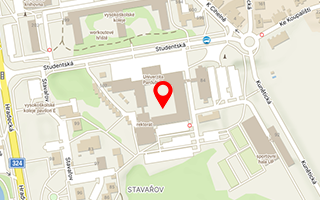- Introduction
The aim of this project is to develop a new type of UV curable varnish for inkjet varnishing machines with the ability to print complex motifs of varnish effects (including 3D). The developed varnish will be cured with a combination of radical and cationic polymerization initiated by UV radiation. Currently, the majority of UV-curable inks and varnishes are cured by radical polymerization and only a small part by cation polymerization. The matter of curing UV-curable inkjet inks/varnishes is influenced by many parameters, which have to be taken into account during development (e.g. print head type, droplet size of ejected ink, viscosity, surface tension, mechanical properties of cured materials, etc.). A common practise is that the set parameters are mutually contradictory (e.g. flexibility of layers vs. surface resistance to scratching), therefore it is necessary to find a compromise. Today, a relatively large number of manufacturers of inkjet inks/varnishes can be found on the market (e.g. Sun Chemical, Toyo Ink, Chimigraf, Svang Ink, etc.). Nevertheless, due to differences between printing machines, printing heads, printed substrates and requirements on the final properties of cured inks and varnishes, it can be difficult to find an optimal varnish for a particular application. From performed market researches it is evident that there is a great demand for UV-curable varnish for pattern UV varnishing purposes. The developed hybrid UV varnish cured by radical and cationic polymerization simultaneously will be curable with medium-pressure mercury lamp (currently most frequently used UV source), and by diodes emitting in UV region (UV-LEDs) as well, which are considered to be highly perspective as a source for UV curing due to their advantages (long life, low energy consumption, instant on/off switching, no ozone generation etc.). This trend is indicated by increase of use of UV-LEDs in recent years and by gradual replacement of mercury lamps in some applications.

